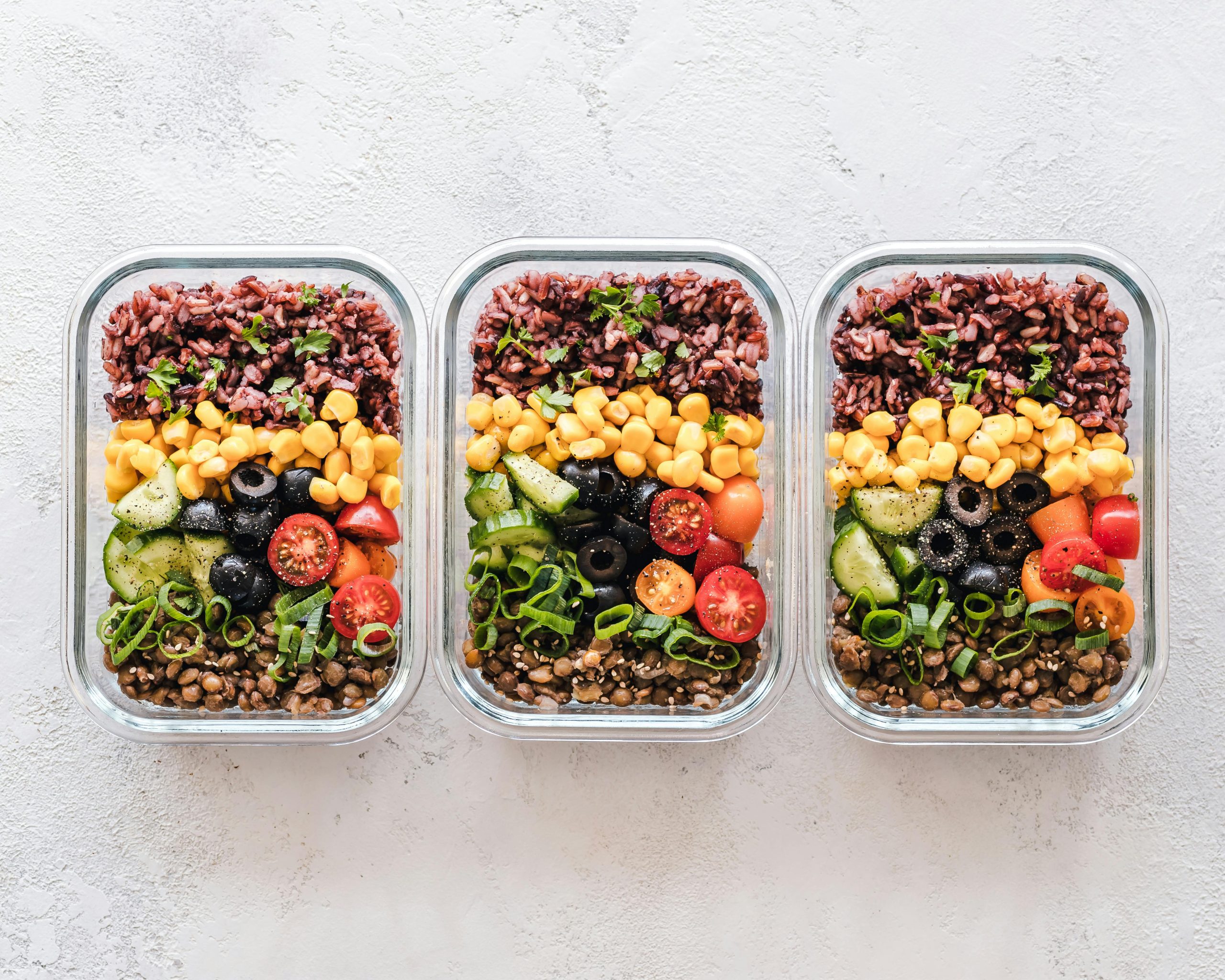Tired of feeling sluggish and seeing those extra pounds stubbornly clinging on? You’re not alone. Millions struggle with fat loss, but the good news is that achieving a healthier physique is entirely within your reach, and it doesn’t require a drastic lifestyle overhaul.
This isn’t about restrictive diets or grueling workouts; it’s about making sustainable, practical changes that seamlessly integrate into your everyday life. We’re talking about achieving lasting results through smart strategies that boost your metabolism, enhance your energy levels, and improve your overall well-being.
Effective fat loss isn’t just about aesthetics; it’s crucial for your long-term health. Carrying excess body fat increases your risk of developing serious health conditions like type 2 diabetes, heart disease, and certain cancers. By focusing on a balanced approach to nutrition and exercise, you can significantly reduce these risks, improve your cardiovascular health, and experience a dramatic increase in energy levels.
This article will provide you with practical, evidence-based strategies to optimize your body composition, building lean muscle mass while simultaneously decreasing body fat percentage. You’ll discover how to leverage your daily routine for better results, without feeling deprived or overwhelmed.
Many fall prey to fad diets and unrealistic expectations. Remember, rapid weight loss is often unsustainable and can even be detrimental to your health. This article will debunk common misconceptions surrounding fat loss, such as the myth that cardio is the only way to burn fat, or that certain foods are inherently “bad.” Instead, we’ll focus on building a holistic approach to fat loss that combines a balanced macronutrient intake (protein, carbohydrates, and fats), consistent strength training to increase your resting metabolic rate (RMR), and mindful calorie management, all within a framework of realistic and achievable goals.
Let’s embark on this journey together towards a healthier, happier, and more confident you!
Fuel Your Fat Loss Journey

Sustainable fat loss isn’t about drastic measures; it’s about building healthy habits that integrate seamlessly into your everyday life. Think of it like a marathon, not a sprint – consistency is key. Small, consistent changes accumulate over time, leading to significant progress.
Let’s start with nutrition. Prioritize whole, unprocessed foods. Focus on lean protein sources like chicken breast, fish, beans, and lentils.
These keep you feeling full and satisfied, curbing cravings and preventing overeating. Research consistently shows a high-protein diet aids in fat loss by boosting metabolism and preserving muscle mass during weight reduction. Aim for around 1 gram of protein per pound of body weight.
Incorporate plenty of fruits and vegetables into every meal. They’re packed with fiber, vitamins, and minerals, essential for overall health and well-being. Fiber, in particular, promotes satiety and aids digestion, further assisting your fat loss goals.
Now, let’s talk exercise. You don’t need a gym membership to achieve your goals. Bodyweight exercises are incredibly effective and can be performed anywhere.
Here’s a sample workout you can do at home, three times a week:
- Squats: 3 sets of 10-12 repetitions. Ensure your knees track over your toes and your back remains straight. This fundamental exercise works multiple muscle groups, boosting your metabolism and calorie burn.
- Push-ups: 3 sets of as many repetitions as possible (AMRAP). Modify by performing them on your knees if needed. Focus on maintaining a straight line from head to heels.
- Lunges: 3 sets of 10-12 repetitions per leg. Keep your front knee behind your toes and maintain an upright posture to avoid injury.
- Plank: Hold for 30-60 seconds, 3 sets. Engage your core muscles to maintain a straight line from head to heels.
Remember to prioritize proper form over the number of repetitions. Poor form can lead to injuries, hindering your progress. Start slowly and gradually increase the intensity and duration of your workouts as you get stronger.
One common challenge is consistency. Life gets busy, and it’s easy to skip workouts or make unhealthy food choices. To combat this, schedule your workouts like any other important appointment.
Prepare healthy meals and snacks in advance to avoid impulsive decisions when hunger strikes. Find an exercise buddy for added motivation and accountability.
Another hurdle is unrealistic expectations. Fat loss takes time and effort. Don’t get discouraged by slow progress.
Celebrate small victories and focus on the long-term goal. Remember, consistency trumps intensity. A small amount of progress each day adds up to significant results over time.
Finally, listen to your body. Rest and recovery are just as important as exercise and nutrition. Get enough sleep, stay hydrated, and don’t hesitate to take rest days when needed.
Your body needs time to repair and rebuild, optimizing your fat loss journey.
5 Essential Workout Strategies

Sustainable fat loss isn’t about drastic measures; it’s about integrating healthy habits into your everyday life. Think of it like building a strong house – you need a solid foundation (nutrition) and consistent construction (exercise) to achieve a lasting result. This section focuses on five workout strategies you can implement immediately to support your fat loss journey.
1. Prioritize Resistance Training: Building muscle mass is crucial for boosting your metabolism. The more muscle you have, the more calories you burn at rest.
Aim for at least two resistance training sessions per week, targeting all major muscle groups. A sample routine could include squats (3 sets of 8-12 reps), push-ups (3 sets to failure), rows (3 sets of 8-12 reps), and lunges (3 sets of 10-15 reps per leg). Remember to maintain proper form: keep your back straight during squats and rows, engage your core throughout each exercise, and control the movement throughout the entire range of motion to avoid injury.
2. Incorporate High-Intensity Interval Training (HIIT): HIIT involves short bursts of intense exercise followed by brief recovery periods. Research shows HIIT is highly effective for fat burning and improving cardiovascular fitness.
A simple HIIT workout could involve 30 seconds of sprinting followed by 60 seconds of jogging, repeated for 20 minutes. You can adapt HIIT to various exercises like burpees, jumping jacks, or mountain climbers. Remember to listen to your body and adjust the intensity based on your fitness level.
3. Don’t Neglect Cardio: While resistance training builds muscle, cardio helps improve your cardiovascular health and burn calories. Aim for at least 150 minutes of moderate-intensity cardio or 75 minutes of vigorous-intensity cardio per week.
This could include brisk walking, jogging, cycling, or swimming. Vary your cardio routine to prevent boredom and challenge different muscle groups.
4. Focus on Compound Exercises: Compound exercises, such as squats, deadlifts, and bench presses, work multiple muscle groups simultaneously, making them incredibly efficient for building muscle and burning calories. These exercises are fundamental to any effective strength training program.
Always prioritize proper form to minimize the risk of injury. Start with lighter weights to master the technique before gradually increasing the load.
5. Listen to Your Body and Rest: Rest and recovery are just as important as exercise. Adequate sleep (7-9 hours per night) allows your body to repair and rebuild muscle tissue.
Don’t be afraid to take rest days; they prevent overtraining and injury, ultimately supporting your long-term fitness goals. Muscle growth and fat loss occur during the recovery phase, not just during workouts. Schedule active recovery days, such as light walks or stretching, to promote blood flow and reduce muscle soreness.
Common Challenges and Solutions: Many find it difficult to stick to a workout routine due to time constraints or lack of motivation. Schedule your workouts like any other important appointment. Find a workout buddy for accountability and support.
Start small and gradually increase the intensity and duration of your workouts. Celebrate your successes, no matter how small, to stay motivated. If you’re struggling to maintain consistency, consider consulting a certified personal trainer for personalized guidance and support.
Master Proper Lifting Technique

Effective weight training isn’t just about moving heavy weights; it’s about mastering the technique to maximize results and minimize injury risk. Proper form ensures you’re targeting the intended muscle groups, leading to greater strength gains and a more efficient calorie burn, both crucial for fat loss. Think of your body as a finely tuned machine – using incorrect form is like driving a Ferrari with the handbrake on; you’re not reaching your full potential.
Let’s start with the basics. Before lifting anything heavy, always warm up with 5-10 minutes of light cardio and dynamic stretches like arm circles and leg swings. This prepares your muscles and joints for the workout ahead, reducing the chance of strains and tears.
Research consistently demonstrates the importance of warm-up routines in injury prevention.
Consider compound exercises – movements that work multiple muscle groups simultaneously. Squats, deadlifts, bench presses, and overhead presses are excellent examples. These are incredibly efficient for fat loss because they burn more calories and stimulate more muscle growth compared to isolation exercises.
Aim for 8-12 repetitions for each exercise, focusing on controlled movements throughout the full range of motion.
Proper Squat Form: Stand with feet shoulder-width apart, toes slightly outward. Keep your back straight, chest up, and core engaged. Lower your hips as if sitting in a chair, ensuring your knees track over your toes.
Push through your heels to return to the starting position. Avoid letting your knees cave inward.
Proper Deadlift Form: Stand with feet hip-width apart, holding the barbell with an overhand grip, slightly wider than shoulder-width. Keep your back straight, core tight, and hinge at your hips, pushing your hips back as you lower the bar towards the ground. Maintain a neutral spine throughout the movement.
Drive through your heels to lift the bar back to the starting position.
A sample workout routine could include: Squats (3 sets of 8-12 reps), Bench Press (3 sets of 8-12 reps), Deadlifts (1 set of 5 reps, 1 set of 3 reps, 1 set of 1 rep – focusing on progressive overload), Overhead Press (3 sets of 8-12 reps), and Bent-Over Rows (3 sets of 8-12 reps). Remember to increase weight progressively as you get stronger.
One common challenge is ego lifting – trying to lift more weight than you can handle with proper form. This significantly increases your risk of injury. Focus on quality over quantity.
If you can’t maintain proper form, reduce the weight. It’s better to lift lighter with perfect technique than heavier with poor form. Consistency and gradual progression will yield better long-term results.
Another challenge is the lack of access to a gym. Bodyweight exercises like push-ups, pull-ups (or assisted pull-ups), lunges, and planks are fantastic alternatives and can be performed anywhere. Remember to prioritize proper form, even with bodyweight exercises.
Finally, remember that proper lifting technique is only one piece of the fat loss puzzle. Combine your weight training with a balanced diet and sufficient cardio for optimal results. Consistency and patience are key – don’t get discouraged if you don’t see immediate changes.
Keep refining your technique, challenging yourself gradually, and celebrate your progress along the way.
Avoid These Common Pitfalls

Sustainable fat loss isn’t about drastic measures; it’s about building consistent, healthy habits. Many people fall into traps that sabotage their progress, often unknowingly. Let’s address some of these common pitfalls and equip you with strategies to overcome them.
Neglecting Protein Intake: Protein is crucial for preserving muscle mass during weight loss. When you’re in a calorie deficit, your body might start breaking down muscle tissue for energy if protein intake is insufficient. Aim for 1.6-2.2 grams of protein per kilogram of body weight daily.
Good sources include lean meats, poultry, fish, eggs, beans, lentils, and Greek yogurt. Don’t underestimate the power of protein shakes to supplement your intake.
Skipping Strength Training: Cardio is great for burning calories, but strength training is essential for boosting metabolism and preserving lean muscle mass. Muscle tissue is metabolically active, meaning it burns calories even at rest. Incorporate strength training at least twice a week.
Focus on compound exercises like squats (maintain a neutral spine, push through your heels), deadlifts (keep your back straight, hinge at the hips), bench presses (maintain a stable grip), and overhead presses (avoid arching your back). Aim for 3 sets of 8-12 repetitions for each exercise. Remember proper form is paramount to prevent injury and maximize results.
Overestimating Calorie Expenditure During Exercise: Many people overestimate the number of calories they burn during exercise, leading to overconsumption. Use a reliable fitness tracker or app, but remember that these are estimates. Focus on making healthy food choices and being mindful of portion sizes rather than solely relying on exercise for calorie burning.
It’s like trying to empty a bathtub with a teaspoon while the faucet is still running – you need to address both intake and output.
Falling Prey to Fad Diets: Crash diets are rarely sustainable and often lead to nutrient deficiencies and metabolic slowdown. Focus on a balanced, whole-foods diet rich in fruits, vegetables, lean proteins, and whole grains. Small, sustainable changes are far more effective in the long run.
Avoid restrictive diets that eliminate entire food groups.
Ignoring Sleep and Stress: Chronic stress and lack of sleep can disrupt hormones that regulate appetite and metabolism, potentially leading to weight gain. Aim for 7-9 hours of quality sleep per night and find healthy ways to manage stress, such as meditation, yoga, or spending time in nature. Prioritize sleep as a cornerstone of your health and wellbeing; think of it as an essential nutrient like protein or carbohydrates.
Lack of Consistency: Consistency is key. Missing workouts or straying from your nutrition plan will inevitably hinder your progress. Start small and gradually increase the intensity and duration of your workouts and the stringency of your diet as you become fitter and more confident in your ability to stick with your plan.
A single missed workout shouldn’t derail your entire week; simply pick up where you left off. Think of your fitness journey as a marathon, not a sprint.
Not Tracking Progress: Tracking your progress, both in terms of weight loss and fitness improvements, helps you stay motivated and identify areas needing adjustment. Regularly monitor your weight, body measurements, and how you feel. Celebrate your milestones – no matter how small – to stay encouraged.
It is this positive reinforcement that will help you navigate the inevitable challenges that you will face along the way.
Smart Progression: Level Up Your Results

Fat loss isn’t a sprint; it’s a marathon. Sustainable weight management requires consistent effort and smart strategies, not drastic measures that often lead to burnout. This section focuses on building a progressive approach to fat loss, ensuring you see results while minimizing the risk of injury and maintaining your motivation.
The key is progressive overload. Think of it like climbing a staircase: you wouldn’t jump to the top floor; you ascend one step at a time. Similarly, gradually increasing the intensity and volume of your workouts prevents plateaus and keeps your body challenged.
This principle applies to both strength training and cardio.
Strength Training: Building Lean Mass. Strength training is crucial for fat loss. Muscle tissue boosts metabolism, helping you burn more calories even at rest.
Start with a full-body routine twice a week. Focus on compound exercises that work multiple muscle groups simultaneously, such as squats, deadlifts, push-ups, and rows. Aim for 3 sets of 8-12 repetitions for each exercise, ensuring proper form.
Squat Form: Stand with feet shoulder-width apart, toes slightly outward. Lower your hips as if sitting in a chair, keeping your back straight and chest up. Push through your heels to return to the starting position.
Deadlift Form: Stand with feet hip-width apart, barbell over your midfoot. Bend at your hips and knees, maintaining a straight back. Grip the bar with an overhand grip, slightly wider than shoulder-width.
Lift the bar by extending your hips and knees simultaneously, keeping your back straight.
Cardio: The Steady Burn. Incorporate at least 150 minutes of moderate-intensity cardio per week, spread across several sessions. This could include brisk walking, jogging, cycling, or swimming.
Gradually increase the duration or intensity of your workouts each week to continue challenging your body. Interval training, alternating high-intensity bursts with periods of rest or low-intensity exercise, is particularly effective for fat loss and improving cardiovascular fitness.
Nutrition: Fueling Your Progress. Nutrition plays a pivotal role in fat loss. Prioritize whole, unprocessed foods like fruits, vegetables, lean proteins, and whole grains.
Control portion sizes to avoid excess calorie intake. Don’t eliminate entire food groups; instead, focus on moderation and balance. Research shows that a consistent calorie deficit, achieved through a combination of diet and exercise, is key to sustainable weight loss.
Addressing Challenges. Many face challenges like lack of time, motivation, or plateauing. Schedule workouts in advance, find a workout buddy for accountability, and mix up your routines to prevent boredom.
If you hit a plateau, reassess your diet and exercise program, considering increasing intensity, adding new exercises, or adjusting your calorie intake slightly.
Remember, consistency is king. Even small, consistent changes in your lifestyle will accumulate significant results over time. Don’t get discouraged by setbacks; view them as learning opportunities.
Keep focusing on your goals and celebrate your progress along the way. Think of it as building a strong foundation – one brick (workout, healthy meal, mindful decision) at a time, eventually creating a sturdy structure (your healthy, fit body).
Mindset Matters: Stay Focused

Fat loss isn’t just about crunches and kale smoothies; it’s a marathon, not a sprint, and your mindset is your most powerful training partner. Consistency is key, and that starts with cultivating a positive and realistic approach. Forget the quick fixes and fad diets; sustainable fat loss is about building healthy habits you can maintain long-term.
One effective strategy is to focus on progress, not perfection. There will be days when you miss a workout or indulge in a treat. Don’t let these setbacks derail your entire journey.
Instead, acknowledge them, learn from them, and get right back on track. Research shows that self-compassion is crucial for long-term adherence to any fitness plan.
Visualize your success. Imagine yourself feeling energized, confident, and achieving your goals. This mental rehearsal can boost motivation and enhance your commitment.
Set realistic, achievable goals – perhaps losing 1-2 pounds a week – and break down larger goals into smaller, manageable steps. Celebrate each milestone you reach along the way, no matter how small.
Consider incorporating mindfulness practices into your routine. Mindfulness helps you become more aware of your hunger cues and emotional eating patterns. This awareness can prevent impulsive snacking and contribute to healthier eating choices.
Even five minutes of daily meditation can significantly improve your overall well-being and focus.
Let’s talk exercise. Think of your body like a finely tuned machine; it needs regular maintenance. Aim for at least 150 minutes of moderate-intensity cardio per week, such as brisk walking, cycling, or swimming.
Combine this with strength training exercises at least twice a week, targeting all major muscle groups. Strength training is crucial for boosting metabolism and increasing muscle mass, both of which aid in fat loss.
Here’s a sample strength training routine: Squats (3 sets of 8-12 reps), Push-ups (3 sets of as many reps as possible), Lunges (3 sets of 10-12 reps per leg), Rows (3 sets of 8-12 reps), and Plank (3 sets, holding for 30-60 seconds). Remember proper form is crucial to prevent injuries. For squats, keep your back straight, chest up, and lower until your thighs are parallel to the ground.
For push-ups, maintain a straight line from head to heels, engaging your core. If you’re unsure about proper form, consult a certified personal trainer.
Nutrition plays a vital role. Focus on whole, unprocessed foods like fruits, vegetables, lean proteins, and whole grains. Limit processed foods, sugary drinks, and unhealthy fats.
Don’t deprive yourself completely; allowing for occasional treats can help maintain your mental fortitude and prevent feelings of deprivation, which can lead to binge eating.
One common challenge is maintaining motivation. Find an exercise buddy for support and accountability, or join a fitness class to stay engaged. Track your progress – whether it’s through a fitness app, a journal, or simply taking photos – to visualize your accomplishments and stay motivated.
Remember, setbacks are inevitable, but they are not failures. They are opportunities for growth and learning.
Finally, be patient and kind to yourself. Sustainable fat loss takes time and effort. Focus on the journey, not just the destination, and celebrate your progress along the way.
You’ve got this!
Conclusion
Successfully losing fat and improving your fitness is achievable through a holistic approach encompassing several key strategies. Nourishing your body with the right foods, as discussed in the nutrition section, fuels your fat loss journey. Combining this with a well-rounded workout plan, incorporating the five essential workout strategies and mastering proper lifting techniques, maximizes calorie burn and builds lean muscle mass.
Avoiding common pitfalls, such as overtraining and inconsistent effort, keeps you on track. Smartly progressing your workouts challenges your body and ensures continuous results. Crucially, maintaining a positive and focused mindset is critical for long-term adherence.
By implementing these strategies, you will not only see positive changes in your physique but also experience significant improvements in your overall health, energy levels, and wellbeing. The benefits extend beyond aesthetics; you’ll build strength, improve cardiovascular health, and enhance your mood. So, we urge you: start your fitness journey today.
Choose one small change from today’s discussion and make it a habit. Remember, consistency and patience are key; results take time. Individual progress varies, so listen to your body and consult with healthcare professionals if needed.
You have the power to transform your health and fitness. Believe in your ability, embrace the process, and celebrate every milestone. You’ve got this!
